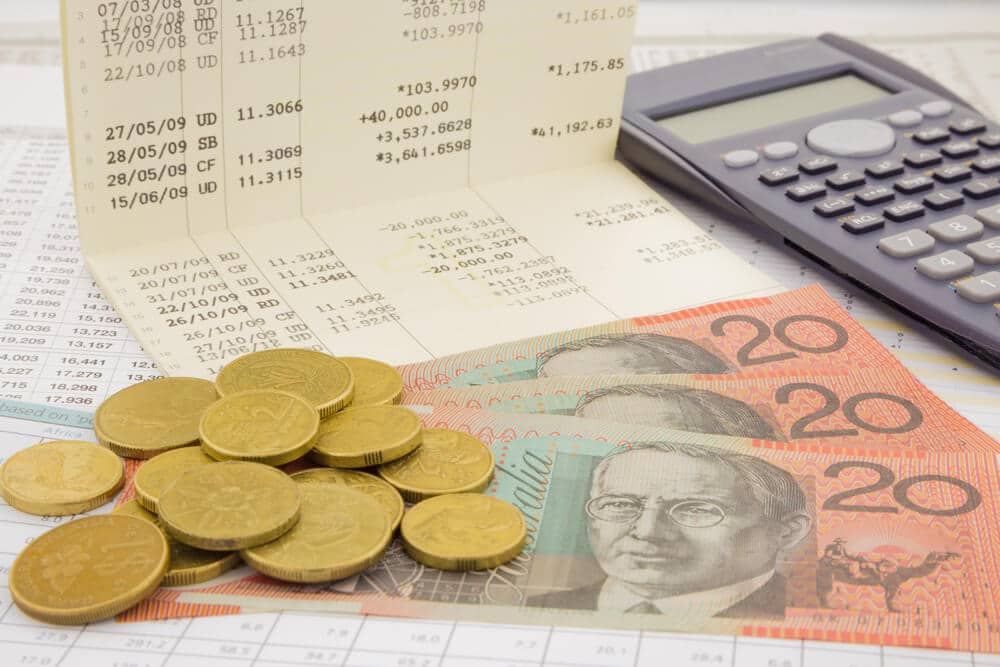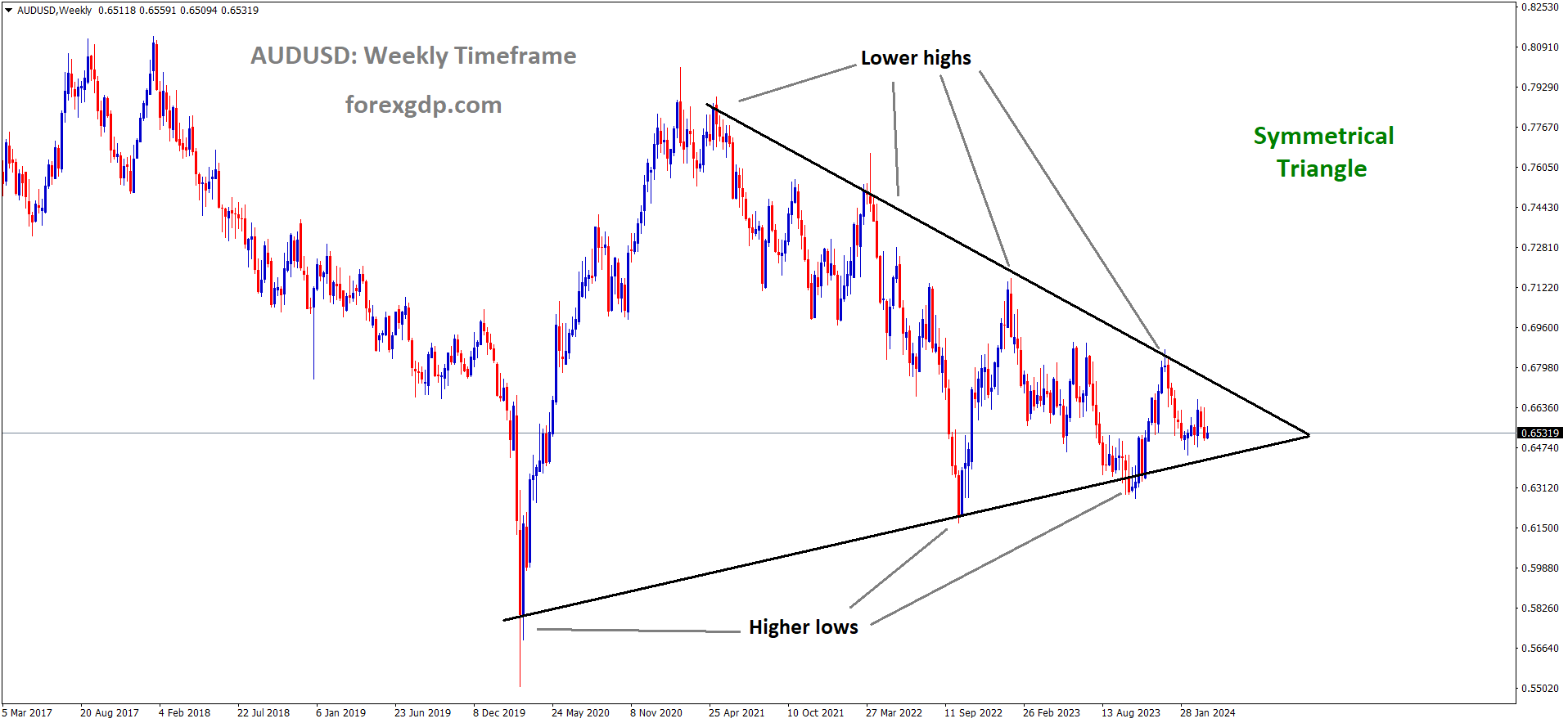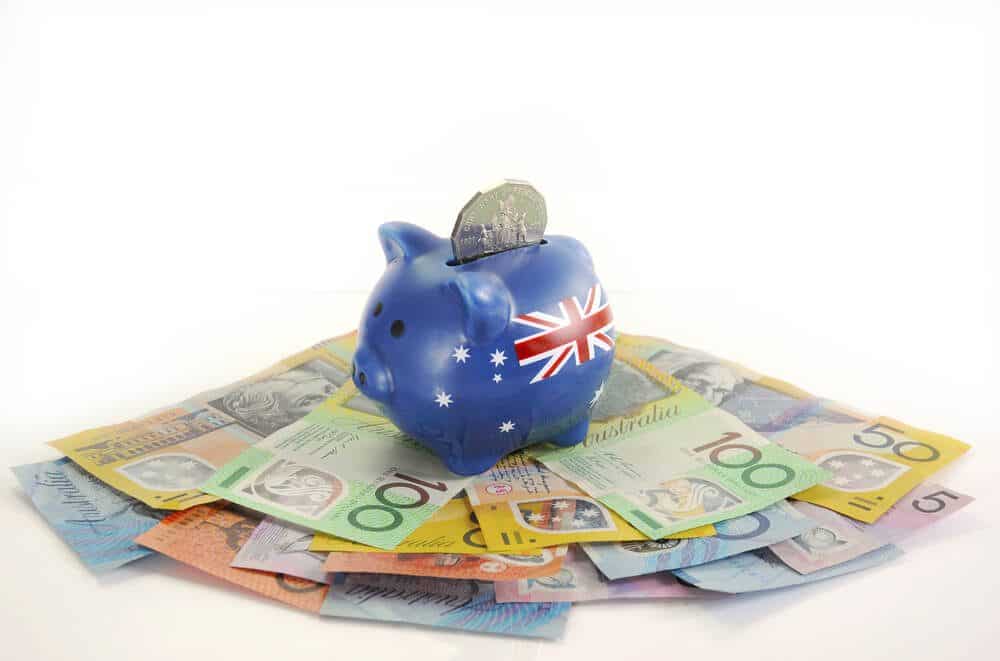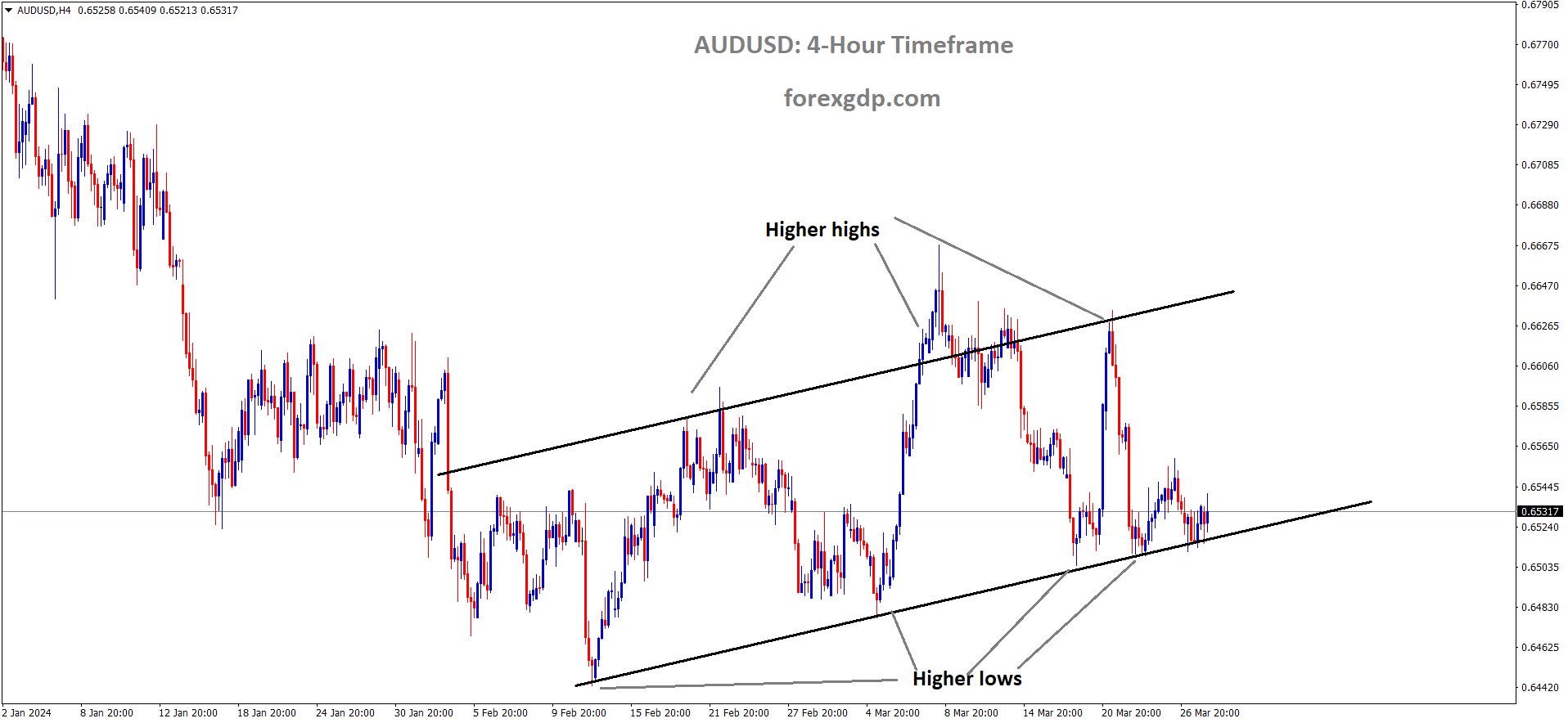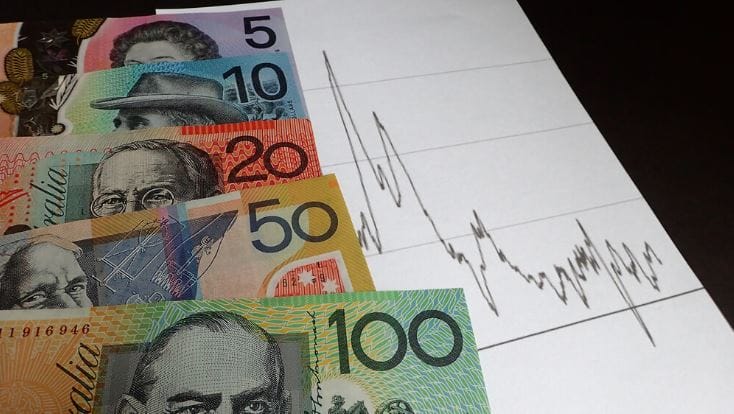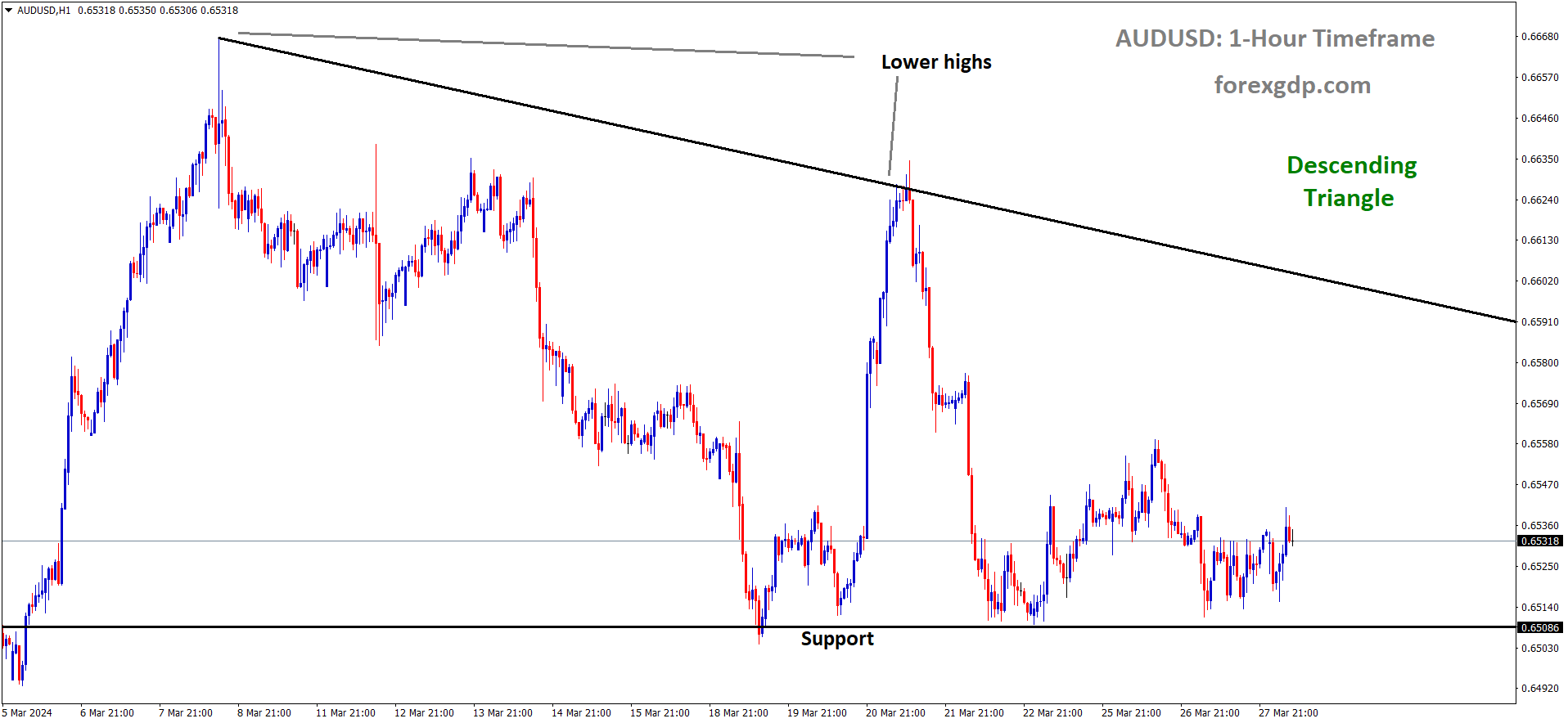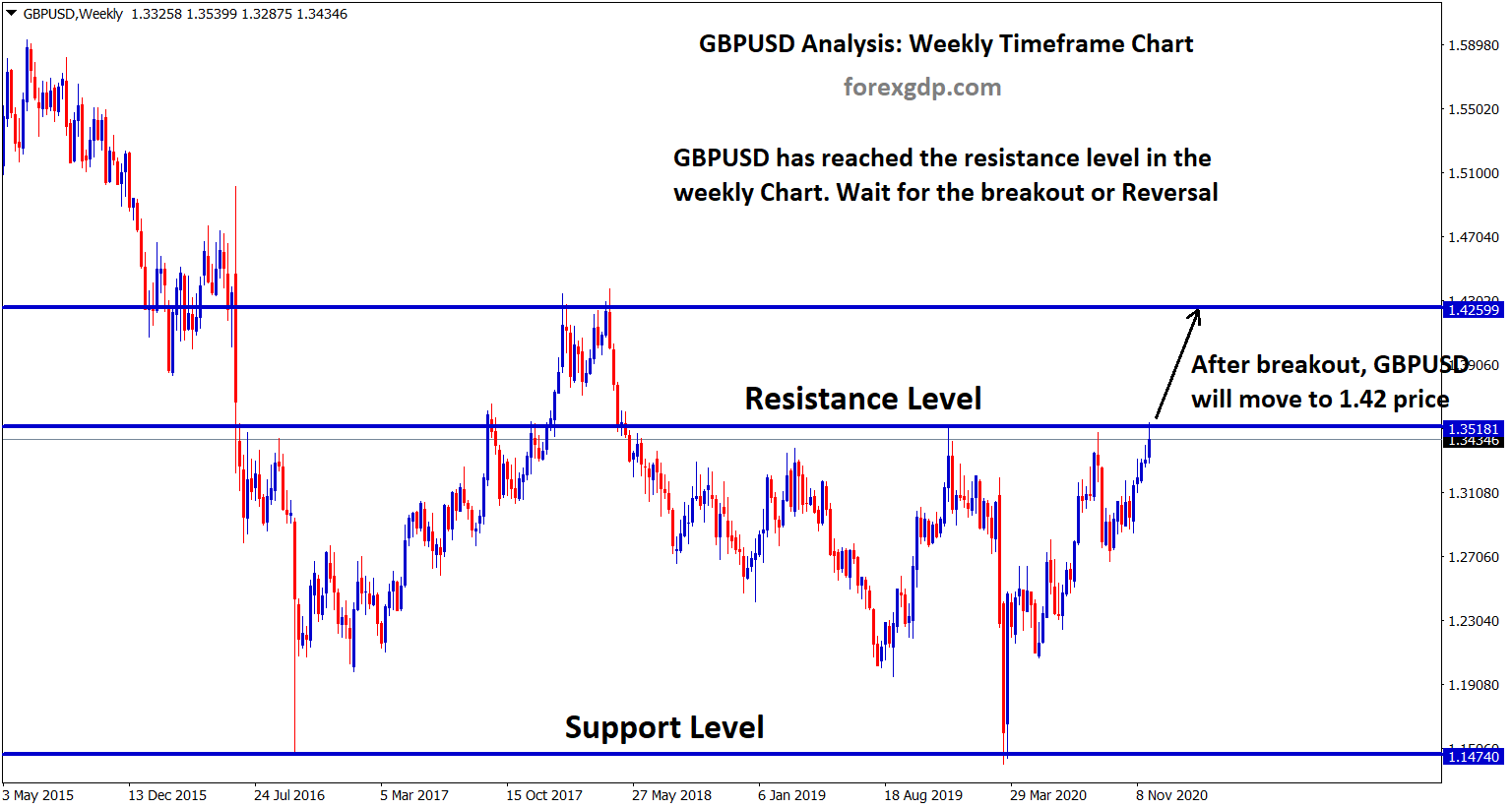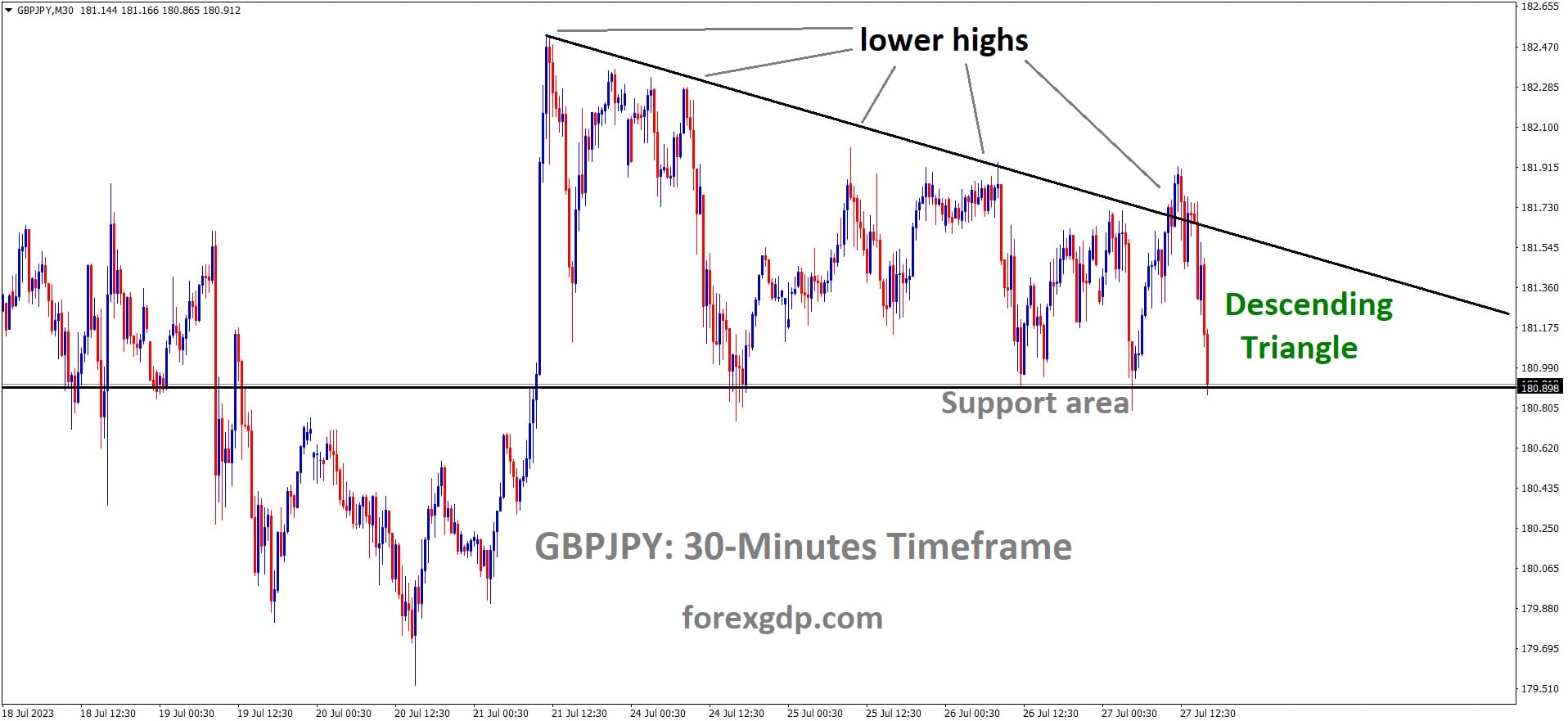AUD: Aus Retail Sales up 0.3% MoM in Feb vs. expected 0.4%
The Australian Retail sales rises to 0.30% MoM in February versus 1.4% Rise in Previous reading, But expected reading is 0.40% MoM. Weaker Retail sales push down Australian Dollar against counter pairs. Thanks to Taylor Swift concert happened in the past month in Australia, People got more new clothes and dining out during this event. So Retail sales soared in February month. Inflation remained higher in Australia for the past 1 year, Public gets more difficulties in spending due to higher rates standing in Australia.
AUDUSD is moving in Symmetrical Triangle and market has fallen from the lower high area of the pattern
Australia’s Retail Sales, an indicator of consumer spending, increased by 0.3% MoM in February, down from the previous reading of a 1.1% rise, as per official data released by the Australian Bureau of Statistics (ABS) on Thursday. The figure fell short of market forecasts by 0.1%.
AUD: Aus retail sales rise in Feb thanks to Taylor Swift concerts
The Australian Retail sales rises to 0.30% MoM in February versus 1.4% Rise in Previous reading, But expected reading is 0.40% MoM. Weaker Retail sales push down Australian Dollar against counter pairs. Thanks to Taylor Swift concert happened in the past month in Australia, People got more new clothes and dining out during this event. So Retail sales soared in February month. Inflation remained higher in Australia for the past 1 year, Public gets more difficulties in spending due to higher rates standing in Australia.
In February, Australian retail sales experienced a modest uptick, primarily attributed to the vibrant Taylor Swift concerts that invigorated spending on clothing and dining out. However, despite this short-term boost, the annual growth trajectory remained lackluster, mainly due to the persistent pressure exerted by high interest rates, which continued to constrain household incomes. The latest data from the Australian Bureau of Statistics (ABS) revealed a 0.3% increase in retail sales from January, falling slightly below the market expectation of a 0.4% rise. The retail sales series has been marked by pronounced fluctuations in recent months, reflecting the disruptive impact of evolving consumer spending patterns.
The total retail sales figure amounted to A$35.9 billion ($23.43 billion), marking a meager 1.6% rise compared to the previous year, despite the country’s robust population growth. The resonance of Taylor Swift’s seven sold-out shows in Sydney and Melbourne was evident, particularly in the categories of clothing, merchandise, accessories, and dining out, contributing significantly to the observed sales surge during the period under review. Nonetheless, underlying growth in retail turnover remained tepid, with a mere 0.1% increase noted in trend terms, indicating persistent challenges beyond the transient impact of the concert phenomenon.
The prevailing economic conditions prompted the Reserve Bank of Australia to maintain the benchmark interest rate at 4.35% for the third consecutive month, signaling a cautious approach amidst finely balanced risks. Despite the prevailing expectations in financial markets for a potential downward adjustment in interest rates, the timing of such a move remains uncertain, with projections suggesting possible relief by August or September. Against this backdrop, the February retail sales report also highlighted a 0.1% decline in food retailing and a more significant 0.8% contraction in household goods retailing, underscoring the ongoing strain on consumer spending.
AUDUSD is moving in Ascending channel and market has reached higher low area of the channel
Sean Langcake, head of macroeconomic forecasting at Oxford Economics Australia, remarked on the challenging consumer landscape, characterized by the confluence of high interest rates and inflation, which continue to erode household finances. While prospects for improvement emerge later in the year, driven by anticipated easing in inflationary pressures and bolstered by real wage growth, the trajectory of retail sales is expected to remain uneven, particularly throughout the initial half of the year, reflecting the prevailing uncertainties and headwinds facing consumers and the broader economy.
AUD: Aus retail sales boosted by Taylor Swift in Feb
The Australian Retail sales rises to 0.30% MoM in February versus 1.4% Rise in Previous reading, But expected reading is 0.40% MoM. Weaker Retail sales push down Australian Dollar against counter pairs. Thanks to Taylor Swift concert happened in the past month in Australia, People got more new clothes and dining out during this event. So Retail sales soared in February month. Inflation remained higher in Australia for the past 1 year, Public gets more difficulties in spending due to higher rates standing in Australia.
In February, Australian retail sales exhibited growth, primarily propelled by heightened consumer expenditure stemming from the series of concerts headlined by pop sensation Taylor Swift. However, the overall spending landscape remained subdued due to persistent challenges posed by inflationary pressures and elevated interest rates.
According to data released by the Australian Bureau of Statistics (ABS) on Thursday, retail sales registered a 0.3% increase on a month-on-month basis in February. Although this growth trajectory fell slightly below market expectations of 0.4%, it notably decelerated from the robust 1.1% rebound observed in January.
The surge in consumer spending was notably fueled by the popularity of seven sold-out Taylor Swift concerts held in Sydney and Melbourne. These events stimulated heightened expenditure on merchandise, apparel, and dining out, as highlighted in a statement by the ABS.
However, despite the temporary boost provided by the Taylor Swift concerts, underlying spending dynamics remained sluggish. Ben Dorber, Head of Retail Statistics at the ABS, emphasized that beyond the concert-related surge, the core growth in retail turnover only saw a marginal increase of 0.1% in trend terms. This stagnation in spending follows a period of heightened volatility observed from November to January.
The economic landscape in Australia has been notably influenced by persistently high inflation rates over the past two years, compounded by a significant 425 basis point increase in interest rates. While inflationary pressures have moderated somewhat from their peak levels in 2023, they still remain substantially above the Reserve Bank of Australia’s target range of 2% to 3%.
Given this scenario, the Reserve Bank of Australia is anticipated to maintain higher interest rates for an extended period, at least in the immediate future. However, there is also a strategic focus on tempering retail spending, given its significant contribution to inflationary pressures.
AUDUSD is moving in Descending Triangle and market has rebounded from the support area of the pattern
Despite the recent stagnation in retail sales growth, there has been a degree of stability, attributable in part to the resilience of Australia’s robust job market. The strength in employment figures has provided a degree of support to household finances, mitigating some of the economic headwinds faced by consumers.
Don’t trade all the time, trade forex only at the confirmed trade setups.
Get more confirmed trade setups here: forexgdp.com/buy/

